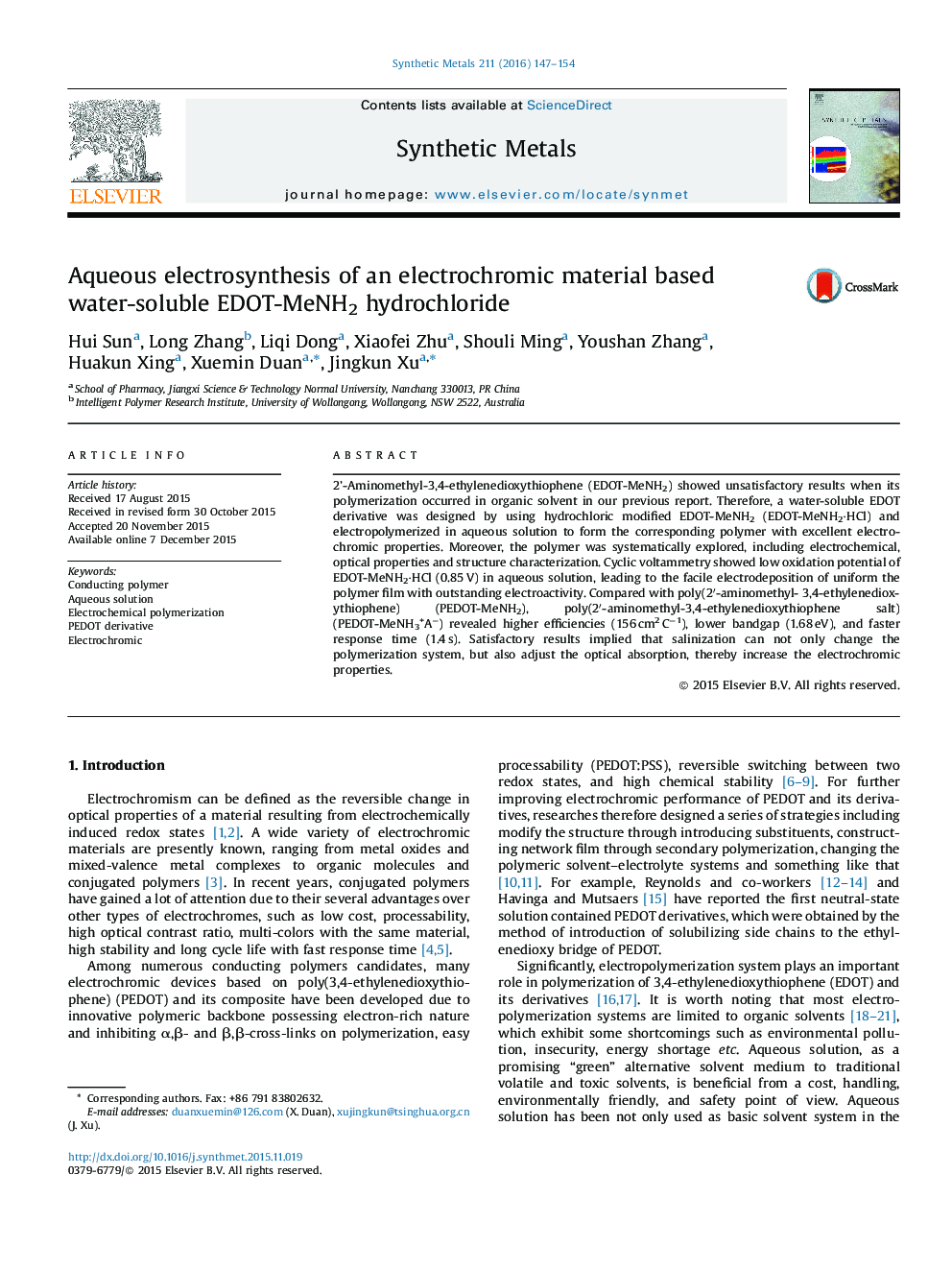| کد مقاله | کد نشریه | سال انتشار | مقاله انگلیسی | نسخه تمام متن |
|---|---|---|---|---|
| 1440368 | 1509366 | 2016 | 8 صفحه PDF | دانلود رایگان |

• A water-soluble EDOT derivative was designed by using hydrochloric modified EDOT-MeNH2 (EDOT-MeNH2·HCl).
• Electropolymerization of EDOT-MeNH2·HCl was achieved easily in aqueous solution to form the corresponding polymer.
• Compared with PEDOT-MeNH2, PEDOT-MeNH3+A− revealed better electrochromic properties including higher efficiencies (156 cm2 C−1), lower bandgap (1.68 eV), and faster response time (1.4 s).
2’-Aminomethyl-3,4-ethylenedioxythiophene (EDOT-MeNH2) showed unsatisfactory results when its polymerization occurred in organic solvent in our previous report. Therefore, a water-soluble EDOT derivative was designed by using hydrochloric modified EDOT-MeNH2 (EDOT-MeNH2·HCl) and electropolymerized in aqueous solution to form the corresponding polymer with excellent electrochromic properties. Moreover, the polymer was systematically explored, including electrochemical, optical properties and structure characterization. Cyclic voltammetry showed low oxidation potential of EDOT-MeNH2·HCl (0.85 V) in aqueous solution, leading to the facile electrodeposition of uniform the polymer film with outstanding electroactivity. Compared with poly(2′-aminomethyl- 3,4-ethylenedioxythiophene) (PEDOT-MeNH2), poly(2′-aminomethyl-3,4-ethylenedioxythiophene salt) (PEDOT-MeNH3+A−) revealed higher efficiencies (156 cm2 C−1), lower bandgap (1.68 eV), and faster response time (1.4 s). Satisfactory results implied that salinization can not only change the polymerization system, but also adjust the optical absorption, thereby increase the electrochromic properties.
Figure optionsDownload as PowerPoint slide
Journal: Synthetic Metals - Volume 211, January 2016, Pages 147–154